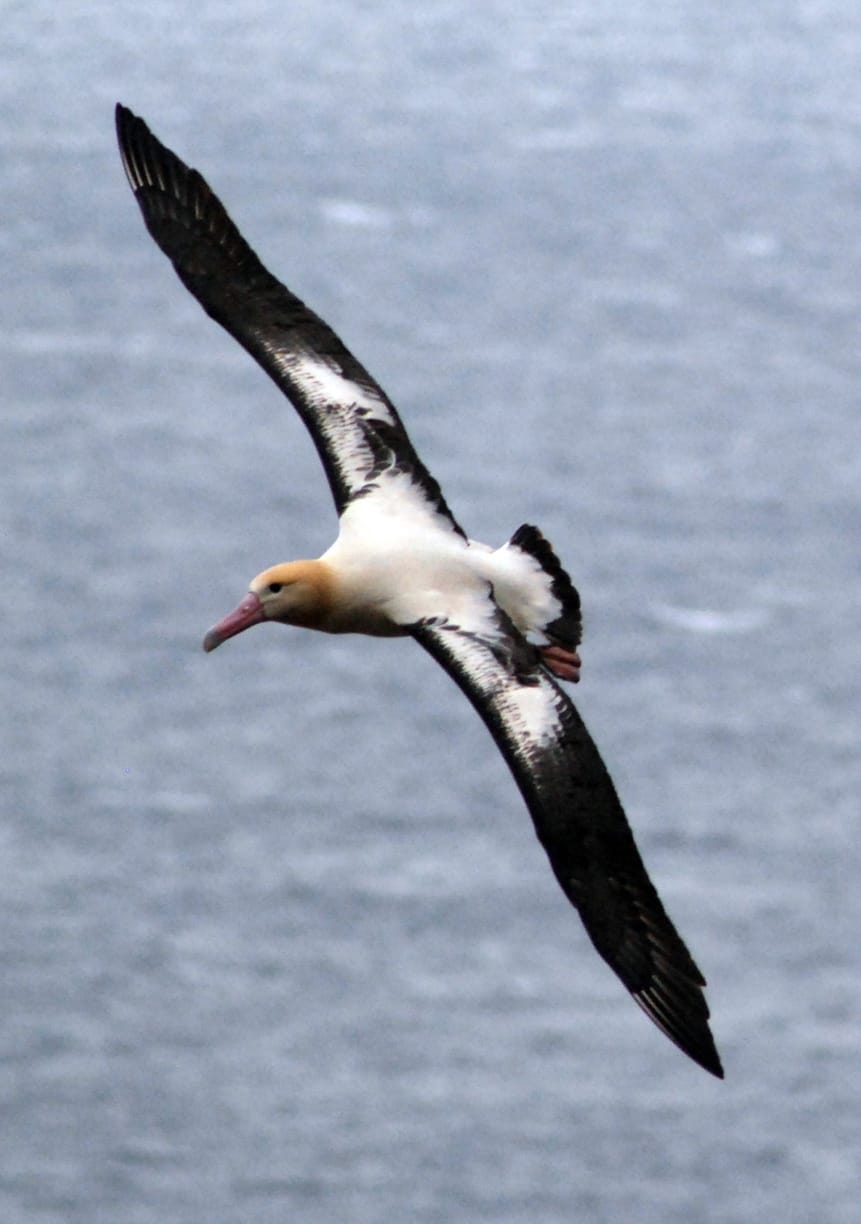GRANTS PASS, Ore. — Federal fisheries managers have proposed a new rule requiring West Coast commercial fishermen who unroll long lines of baited hooks on the ocean bottom to also put out long lines of fluttering plastic to scare off seabirds trying to steal the bait.
The proposed rule published Tuesday in the Federal Register is designed to protect the endangered short-tailed albatross, which once numbered in the millions but is down to about 1,200 individuals.
The West Coast is the last piece of U.S. waters within the range of the short-tailed albatross to adopt the protective measures, which are already in effect for waters off Alaska and Hawaii, said Rob Suryan, a research associate professor of fisheries at Oregon State University.
The public has 30 days to comment on the proposed rule, which is expected to take effect in November.
The protective measures are known as streamer lines, which are towed in the water from a high point on the boat. Brightly colored tubing hanging from the lines flutters, scaring off the birds.
The new rule affects about 270 fishing boats using long lines to target primarily sablefish, also known as black cod, a fishery with average West Coast landings of $33 million a year. Albatross tend to flock behind fishing boats in the deep waters at the edge of the Continental Shelf where sablefish are caught, Suryan said.
Dave Hedrick, who fishes for black cod out of Seattle, says he has been required to use streamer lines for years in Alaska, and they work well, but he expects that some fishermen will not like making the change.
“Nobody really likes changes to how they are doing things,” said Hedrick. “But as an industry, we don’t really want to catch birds. It’s not socially OK. It’s not environmentally OK.”
And it’s bad for business because fishermen can be plagued by flocks of fulmars and gulls, and “baits that don’t get to the bottom don’t catch any fish.”
The fishery could be shut down if more than two short-tailed albatross are killed in a two-year period, NOAA Fisheries spokesman Michael Milstein said.
The streamer lines have been required for long-liners targeting sablefish and halibut in Alaskan waters since 1997. They are also required for long-liners targeting swordfish and tuna off Hawaii, Suryan said.
The technique was developed by researchers from Sea Grant, an arm of the National Oceanic and Atmospheric Administration, and Oregon State University.
The short-tailed albatross is distinguished from other albatross species by its bubble-gum pink bill. The bird was nearly wiped out by feather hunters in the early 1900s. The U.S. Fish and Wildlife Service puts the current population at about 1,200.



